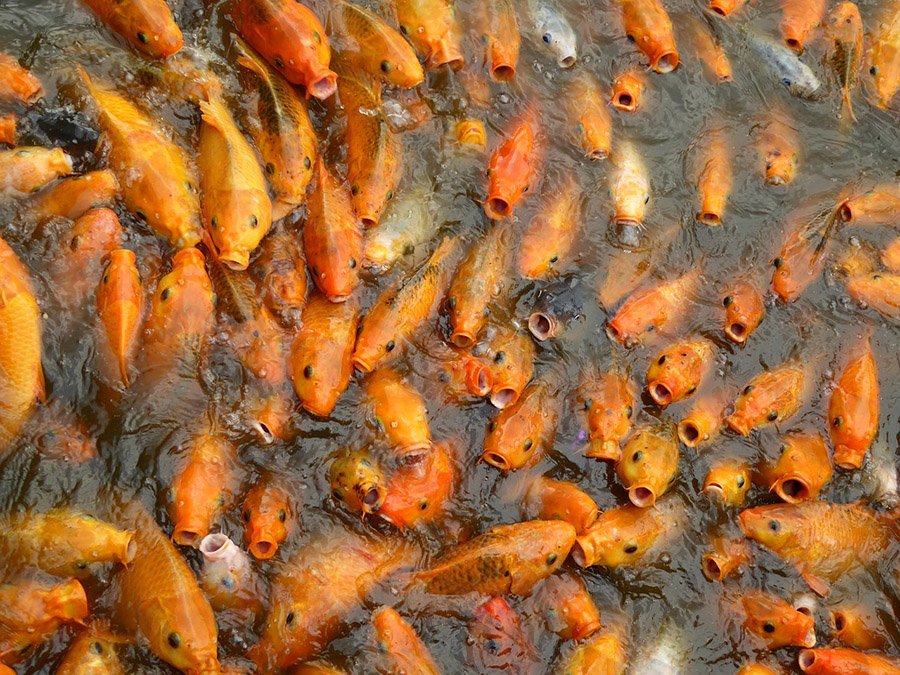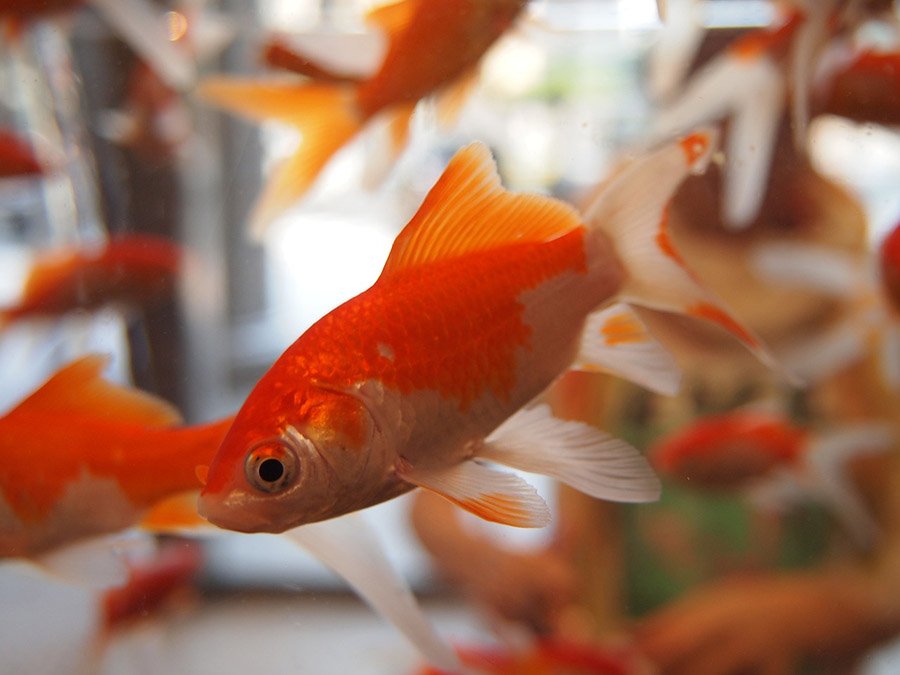Goldfish are one of the most popular pets worldwide, and their care is often misunderstood. One of the most crucial aspects of goldfish care is their diet. Just like humans, goldfish require a balanced and nutritious diet to thrive and show off their best colors.
If you’re a goldfish owner or considering becoming one, understanding what to feed them can make a world of difference in their health and happiness. Let’s dive into the world of goldfish cuisine and discover their favorite treats!
Goldfish Dietary Basics: What They Need to Thrive
Goldfish are omnivorous, meaning they consume both plant and animal matter. In the wild, they have a varied diet that includes algae, small insects, and plant debris. To mimic this in captivity, providing a balanced diet is essential.
The core of their diet should consist of carbohydrates, proteins, fats, vitamins, and minerals. Carbohydrates provide energy, proteins are crucial for growth and tissue repair, and fats are required for energy storage and cell function.
Aside from these macronutrients, goldfish also require certain vitamins and minerals. Vitamin C, for instance, is vital for immune function and tissue repair, while calcium and phosphorus are necessary for strong bones and teeth. Ensuring your goldfish receives a balanced diet with these essential nutrients will help them grow robustly and maintain vibrant colors.
A varied diet is key to preventing nutritional deficiencies and promoting overall health. While commercial fish foods are often formulated to provide a balanced diet, supplementing with fresh foods can offer additional benefits and keep your goldfish excited about mealtime.
Commercial Fish Food: Pellets vs. Flakes
When it comes to commercial fish food, you’ll find two main types: pellets and flakes. Both have their pros and cons, and the best choice often depends on the specific needs of your goldfish and their feeding habits. Pellets are typically denser and sink to the bottom, making them ideal for bottom-feeding goldfish varieties. They are also less likely to cloud the water, which helps maintain a clean tank environment.
Flakes, on the other hand, float on the surface, making them suitable for goldfish that prefer to feed at the top of the tank. They are easier to portion out, allowing for more controlled feeding, especially for juvenile goldfish. However, flakes can break down quickly and might not provide as much nutritional value per unit as pellets.
Ultimately, a mix of both pellets and flakes can offer a balanced approach, ensuring all goldfish in the tank get their fair share of food. It’s important to choose high-quality commercial foods that are specifically formulated for goldfish, as they contain the right balance of nutrients and are easier for goldfish to digest.

Fresh Veggies: A Goldfish’s Crunchy Delight
Goldfish absolutely love fresh vegetables, and these crunchy delights can be a great way to add variety to their diet. Vegetables like peas, lettuce, spinach, and zucchini are all excellent choices. Peas are especially good for preventing constipation, a common issue in goldfish. Simply blanch the peas, remove the skins, and chop them into small, bite-sized pieces before feeding.
Leafy greens such as lettuce and spinach can be attached to a veggie clip and placed inside the tank, allowing goldfish to nibble at their leisure. These vegetables are rich in essential vitamins and minerals, promoting good health and vibrant colors. Zucchini can also be blanched and sliced into thin pieces, providing another tasty treat.
Including fresh vegetables in your goldfish’s diet not only enhances their nutrition but also stimulates their natural foraging behavior, making mealtime more engaging and enjoyable. Just be sure to remove any uneaten veggies from the tank after a few hours to prevent water quality issues.
Protein Sources: Worms, Insects, and More
Protein is a crucial component of a goldfish’s diet, especially for growth and repair. In the wild, goldfish consume a variety of protein sources, including small insects and crustaceans. In captivity, you can provide similar nutrition through foods like bloodworms, daphnia, brine shrimp, and even small bits of cooked fish or shrimp.
Bloodworms and daphnia are particularly popular because they are readily available frozen or freeze-dried, making them convenient to store and use. These protein sources are rich in essential amino acids and can help boost your goldfish’s immune system and overall health. Brine shrimp are another excellent option, providing not only protein but also essential fatty acids.
Insects like crickets and mealworms can also be offered occasionally for variety. However, these should be given sparingly to prevent overfeeding and potential digestive issues. Incorporating these protein-rich treats into your goldfish’s diet will ensure they remain healthy, active, and vibrant.
The Role of Algae in a Goldfish’s Diet
Algae play a significant role in a goldfish’s diet, especially in their natural habitat. Algae are rich in vitamins and minerals, providing essential nutrients that support overall health. In a home aquarium, goldfish will often graze on algae growing on tank surfaces and decorations, which can be a nutritious and natural food source.
While some algae growth is beneficial, it’s important to strike a balance. Excessive algae can lead to poor water quality and other issues. You can supplement your goldfish’s diet with algae-based foods such as spirulina flakes or tablets. Spirulina is a type of blue-green algae that is packed with nutrients and can help enhance the color and vitality of your goldfish.
Offering algae-based foods ensures your goldfish receives the benefits of algae without relying solely on tank growth. It’s a simple way to mimic their natural diet and provide them with the essential nutrients they need to thrive.

Fruits for Fish: Sweet Treats They Love
Surprisingly, goldfish can enjoy a variety of fruits as occasional treats. Fruits like oranges, grapes, and watermelon can be offered in small quantities. These fruits provide natural sugars, vitamins, and hydration, making them a refreshing and nutritious snack.
Oranges, for instance, are rich in vitamin C, which supports the immune system and overall health. Simply peel and section the orange, then cut it into small, easily manageable pieces. Grapes can be halved and seeds removed before feeding, while watermelon can be sliced into small chunks without the rind.
While fruits should not make up a large portion of your goldfish’s diet due to their high sugar content, they can be a delightful and healthy addition when given in moderation. Always remove any uneaten fruit from the tank to prevent water quality issues.
Homemade Fish Food: Recipes and Tips
Making homemade fish food can be a rewarding way to ensure your goldfish receive a balanced and nutritious diet. One simple recipe involves blending together peas, spinach, fish fillets, and shrimp, then mixing in a gelatin base to hold the mixture together. This creates a nutrient-dense food that can be cut into small cubes and frozen for easy portioning.
Another option is to create a veggie-rich gel food using ingredients like carrots, kale, and algae powder. Blend the vegetables until smooth, mix in some unflavored gelatin, and pour into a mold to set. This homemade food can be stored in the refrigerator and cut into small pieces for feeding.
When making homemade fish food, always ensure that the ingredients are fresh and free from contaminants. Avoid using any ingredients that are toxic to fish, such as onions or garlic. Homemade fish food allows you to tailor the nutrition to your goldfish’s specific needs and can be a fun and creative way to care for your aquatic pets.
Treats to Avoid: Harmful Foods for Goldfish
While it’s tempting to share your favorite snacks with your goldfish, some foods can be harmful or even deadly to them. Avoid feeding your goldfish processed human foods like bread, crackers, or chips. These items often contain additives and preservatives that can cause digestive issues and deteriorate water quality.
Certain vegetables, like onions and garlic, are toxic to fish and should never be included in their diet. Additionally, avoid feeding your goldfish any citrus fruits with seeds, as the seeds can be harmful. Chocolate and sugary snacks are also a big no-no, as they can cause serious health problems.
It’s important to research and understand the dietary needs of goldfish to prevent any accidental poisoning or health issues. Stick to safe and nutritious foods to keep your goldfish happy and healthy.

Feeding Frequency: How Often and How Much?
Feeding frequency is crucial for the health of your goldfish. Generally, adult goldfish should be fed two to three times a day, while young goldfish may require more frequent feedings due to their higher growth rates. The key is to provide small amounts of food that can be consumed within a few minutes, preventing overfeeding and water quality issues.
It’s important to observe your goldfish during feeding times to ensure they are eating all the food provided. Uneaten food can quickly decompose and pollute the tank, leading to potential health problems. Using a feeding schedule can help maintain consistency and prevent overfeeding.
Adjusting the portion sizes based on the number of goldfish and their activity levels will ensure they receive adequate nutrition without the risk of obesity or malnutrition. Regularly monitoring their growth and health will help you fine-tune their feeding routine for optimal well-being.
Seasonal Feeding: Adjusting Diet Throughout the Year
Goldfish metabolism changes with the seasons, especially in outdoor ponds where water temperatures fluctuate. During warmer months, goldfish are more active and require more frequent feedings with a diet rich in protein to support growth and energy levels. In contrast, during the colder months, their metabolism slows down, and they require less food.
In winter, especially for goldfish in outdoor ponds, feeding should be reduced significantly or stopped altogether if they enter a state of torpor. High-protein foods should be avoided during this time, as their digestive systems slow down, making it harder to process rich foods. Instead, focus on easily digestible foods like wheat germ pellets.
Seasonal adjustments in feeding not only help maintain the health and well-being of your goldfish but also ensure they are adequately prepared for the changing environmental conditions. Monitoring water temperatures and adjusting the diet accordingly will help your goldfish thrive year-round.
Feeding your goldfish the right diet is a delightful and essential aspect of their care. By understanding their dietary needs and preferences, you can provide a balanced and nutritious diet that keeps them healthy, active, and vibrant.
From commercial fish foods to fresh veggies and occasional sweet fruits, goldfish enjoy a variety of treats that can make mealtime exciting. Remember to avoid harmful foods, adjust feeding frequencies, and accommodate seasonal changes to ensure your goldfish’s diet supports their overall well-being. Happy feeding!















